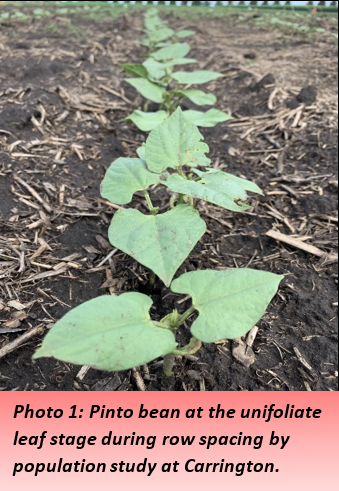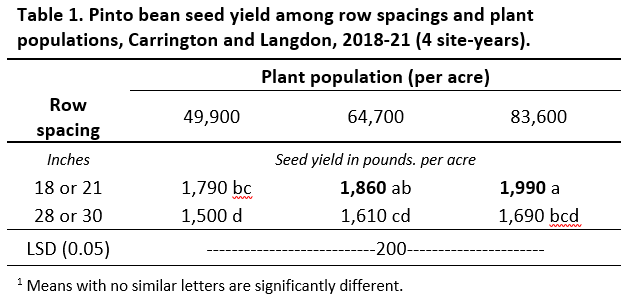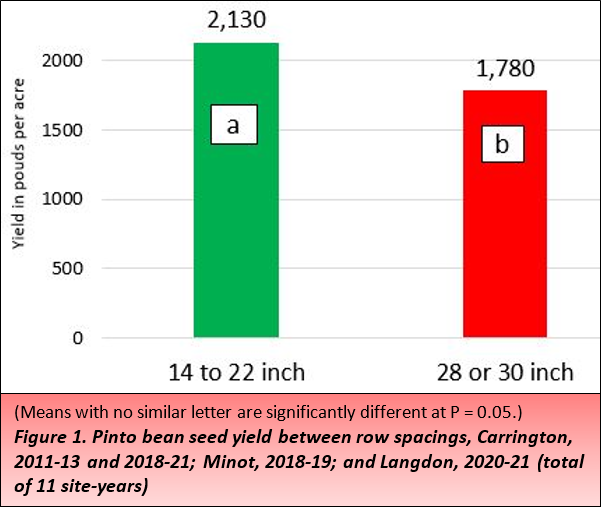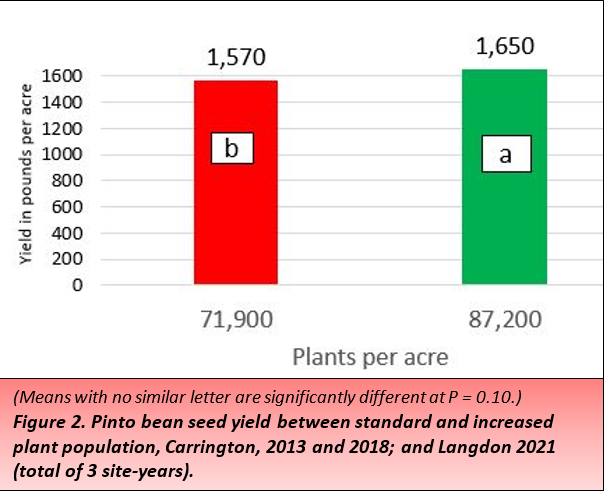Pinto Bean Row Spacing and Plant Population (05/26/22)
North Dakota State University has traditionally recommended an established stand of 70,000 plants per acre for pinto bean grown in wide rows, typically 30-inch rows. However, narrower row spacings and greater plant populations are trending in dry bean production. Previous field research in eastern North Dakota indicated a pinto bean seed yield increase of 14% with 18-inch rows compared to 30-inch rows. North Dakota data from a 2021 dry bean grower survey indicate 55% of pinto bean acres were planted in row widths ranging from 11 to 25 inches compared to 40% grown in wide rows. In addition, the survey of North Dakota bean growers indicates 53% of pinto bean acres were planted at rates of 80,000 to 99,000 seeds per acre, with the likely goal of establishing greater than 70,000 plants per acre.
From 2018 to 2021, the Carrington (Photo 1) and Langdon Research Extension Centers, conducted a pinto bean field study comparing intermediate (18- or 21-inch) to wide (28- or 30-inch) row spacing and targeted stands of 50,000, 70,000 and 90,000 plants per acre. Seed yield was primarily influenced by row spacing. Average yield increase was 17% with intermediate row spacing and plant populations of about 65,000 or 84,000 plants per acre versus wide rows (Table 1).


Pinto bean row spacing evaluated as a single factor across 11 trials (Carrington, Langdon and Minot; 2011 to 2013 and 2018 to 2021) indicates a yield increase of 20% with 15- to 22-inch rows versus wide rows (Figure 1).

Plant population evaluated as a single factor across trials at Carrington and Langdon indicates a yield increase of 5% with population at 87,000 plants per acre compared to a population similar to the standard density of 70,000 plants per acre (Figure 2).

For more details, see the new extension publication A2060 “Pinto bean response to row spacing and plant population in North Dakota” available at https://www.ndsu.edu/agriculture/extension/publications/pinto-bean-response-row-spacing-and-plant-population-north-dakota
Extension Cropping Systems Specialist
NDSU Carrington Research Extension Center
Extension Agronomist Broadleaf Crops
